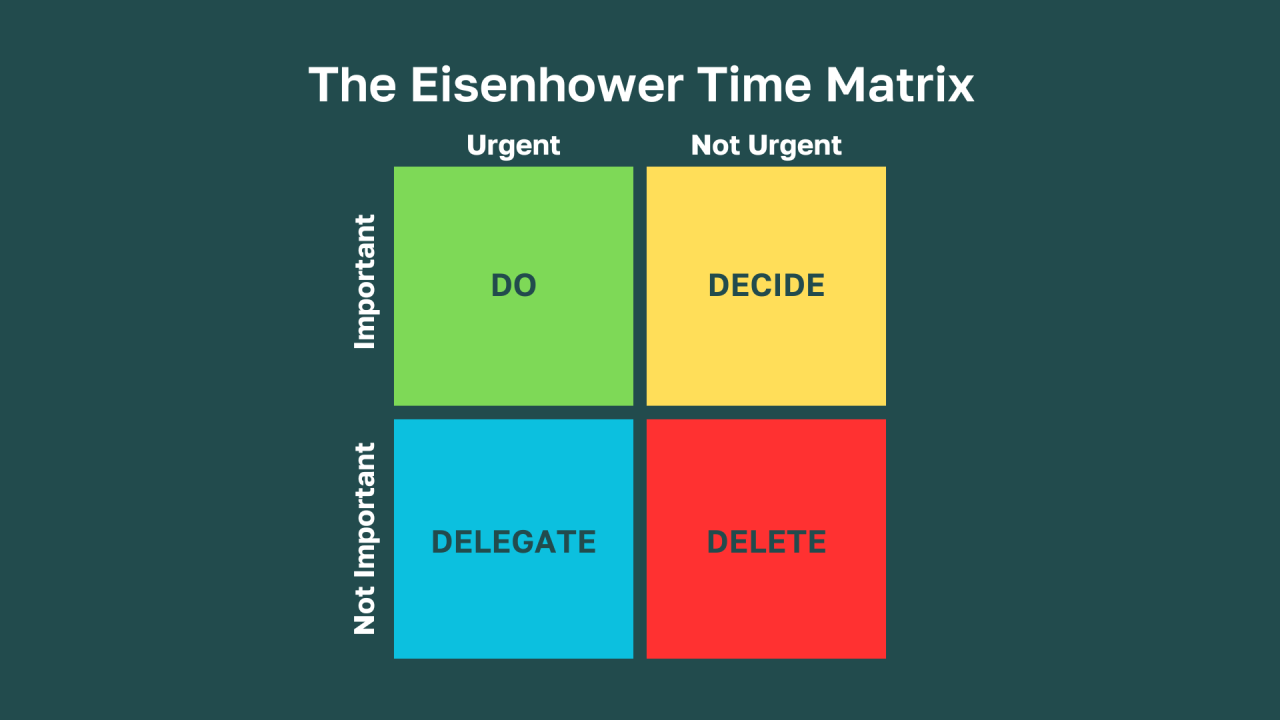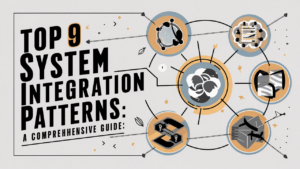In today’s busy world, where the demands of work, life, and personal responsibilities can quickly pile up, it’s essential to know how to prioritize effectively. The Eisenhower Matrix, also known as the Urgent-Important Matrix, is a time management tool designed to help you focus on the tasks that truly matter while eliminating or delegating those that don’t.
This powerful framework was popularized by Dwight D. Eisenhower, the 34th President of the United States, who famously said: “What is important is seldom urgent, and what is urgent is seldom important.” His approach to decision-making led to the creation of the Eisenhower Matrix, a simple but effective way to categorize tasks based on their urgency and importance.
How the Eisenhower Matrix Works 🛠️
The Eisenhower Matrix divides tasks into four quadrants based on two criteria:
Urgent: Tasks that require immediate action or attention.
Important: Tasks that contribute to long-term goals or values.
By combining these two criteria, you get four types of tasks that help you make clear decisions on how to manage your time:
Quadrant 1 (Do): Urgent and important tasks—must be done now.
Quadrant 2 (Schedule): Important but not urgent—schedule for later.
Quadrant 3 (Delegate): Urgent but not important—delegate to others.
Quadrant 4 (Delete): Neither urgent nor important—eliminate or avoid.
Let’s break down each quadrant and discuss how to manage your tasks based on where they fall in the matrix.
Quadrant 1: Do (Urgent and Important) ⚡
These are tasks that need immediate attention and have consequences if not completed. They typically include crises, pressing deadlines, or issues that impact the overall success of a project or goal.
💡 Examples:
Responding to a critical client request.
Meeting a project deadline.
Fixing an urgent system breakdown.
Tips for Handling Quadrant 1 Tasks:
Do them first: Tackle these tasks at the start of your day, when your energy and focus are at their highest.
Prevent distractions: Use tools like Do Not Disturb mode on your phone or computer to maintain focus while handling these critical tasks.
Quadrant 2: Schedule (Important but Not Urgent) 📅
Tasks in this quadrant are the key to long-term success. They are important for your goals or personal growth but don’t require immediate action. Often, people neglect these tasks because they don’t seem urgent, but overlooking them can lead to problems down the road.
💡 Examples:
Planning your business strategy.
Investing in personal development or learning.
Building long-term client relationships.
Tips for Handling Quadrant 2 Tasks:
Time-block these tasks: Schedule them in your calendar to ensure you dedicate time to work on them.
Don’t overbook: Only say “yes” to Quadrant 2 tasks that align with your long-term goals, and avoid taking on unnecessary projects.
Focusing on Quadrant 2 tasks helps you stay ahead of the curve and reduces the number of urgent tasks you’ll face in the future.
Quadrant 3: Delegate (Urgent but Not Important) 🔄
Tasks in this quadrant demand immediate attention but don’t necessarily require your specific skills. These can be delegated to someone else, freeing up your time for more important work.
💡 Examples:
Handling routine administrative work.
Answering non-critical emails.
Plowing snow from the driveway (if it’s not urgent for you).
Tips for Handling Quadrant 3 Tasks:
Identify delegation opportunities: Find tasks that others can do just as well (or almost as well) as you and delegate them.
Give clear instructions: When delegating, ensure the person understands the task and deadline, and follow up without micromanaging.
Delegating frees you to focus on the tasks that have a bigger impact on your goals. Don’t hesitate to offload tasks that don’t need your expertise.
Quadrant 4: Delete (Neither Urgent Nor Important) 🗑️
Tasks that fall into this quadrant are distractions and time-wasters. They neither help you achieve your goals nor require your attention. The best way to handle these tasks is to eliminate them.
💡 Examples:
Watching TV indiscriminately.
Engaging in office gossip.
Attending meetings without a clear agenda.
Tips for Handling Quadrant 4 Tasks:
Identify time-wasters: Reflect on your daily routine and identify the activities that don’t add value to your work or personal life.
Cut them out: Set limits on distractions. For instance, limit social media use or avoid unnecessary meetings that do not serve your objectives.
Eliminating or reducing Quadrant 4 activities creates more space in your day for meaningful work. It also helps you feel less overwhelmed and more in control of your time.
Why the Eisenhower Matrix Works 🔑
The beauty of the Eisenhower Matrix is its simplicity. It forces you to categorize your tasks based on both urgency and importance, ensuring that you’re not just busy but truly productive. By focusing on what’s important rather than what’s merely urgent, you can make progress on long-term goals without getting overwhelmed by daily distractions.
Practical Steps to Implement the Eisenhower Matrix ✅
List all tasks: Start by writing down all your tasks for the day or week.
Sort by quadrant: Assign each task to one of the four quadrants of the Eisenhower Matrix based on its urgency and importance.
Take action:
Do: Handle Quadrant 1 tasks immediately.
Schedule: Plan time to work on Quadrant 2 tasks.
Delegate: Pass off Quadrant 3 tasks to others.
Delete: Eliminate Quadrant 4 tasks from your day.
Review regularly: At the start of each day or week, review your tasks and update the matrix as priorities shift.
Conclusion: Take Control of Your Time
The Eisenhower Matrix is a game-changer when it comes to prioritizing tasks and boosting productivity. By focusing on what’s important rather than just reacting to what’s urgent, you can reduce stress, stay ahead of deadlines, and achieve your long-term goals. The key is to review your tasks regularly and stay disciplined in following the matrix.
Ready to take control of your time? Start using the Eisenhower Matrix today, and watch your productivity soar!

























